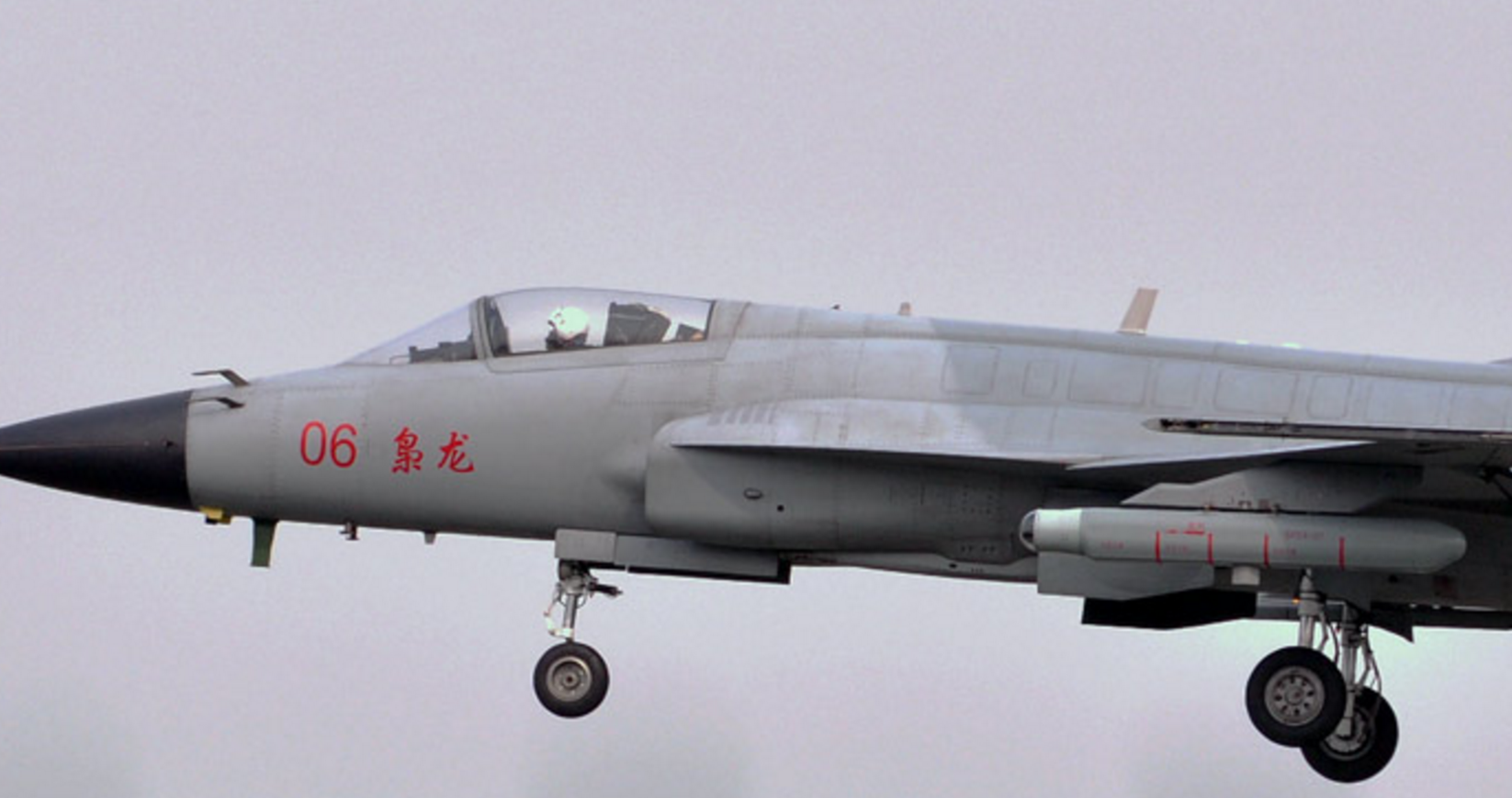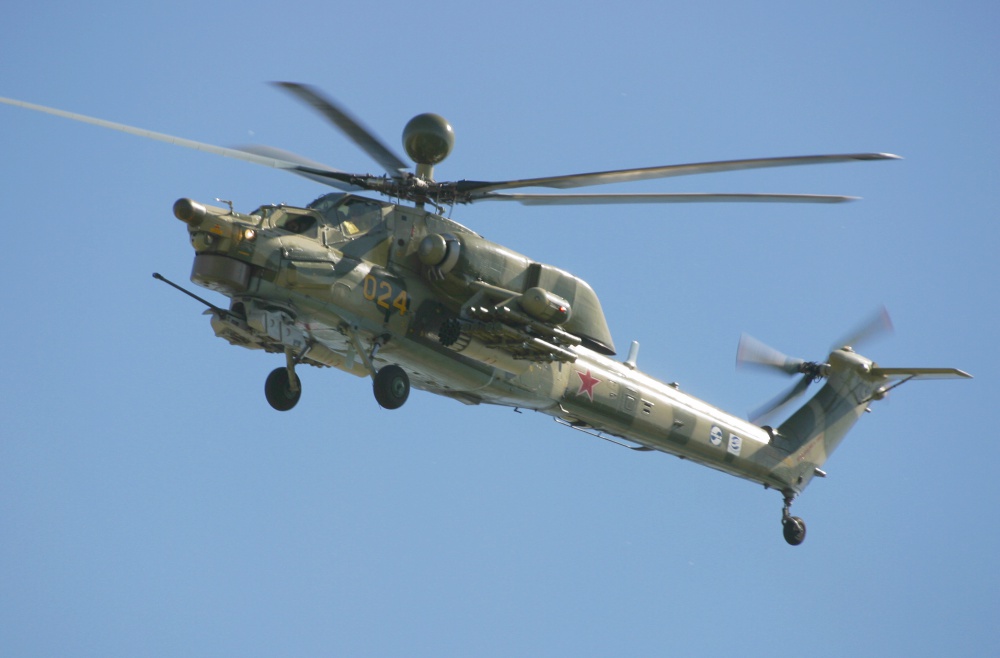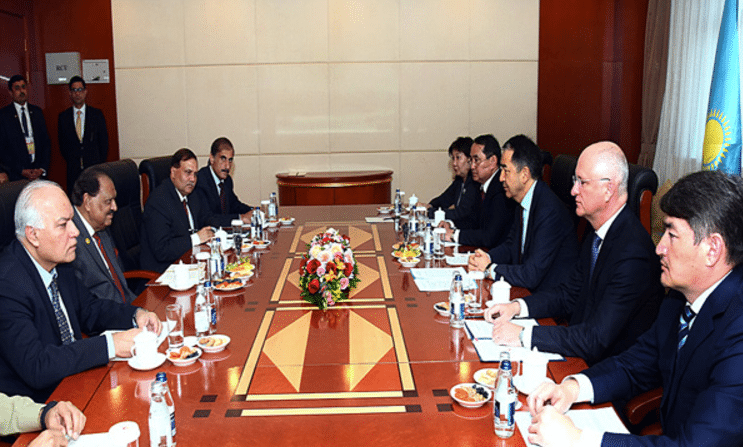2350Views 17Comments

Ideas about the JF-17 Block-III’s IRST
By Bilal Khan
Alongside an active electronically-scanned array (AESA) radar, helmet mounted display and sight (HMD/S), high off-boresight (HOBS) air-to-air missiles, the Pakistan Air Force (PAF) is also considering to equip the forthcoming JF-17 Block-III with an infrared search and track (IRST) system.
While the inclusion of an AESA radar would offer immense benefit, especially in terms of infusing the JF-17 with effective electronic counter-countermeasures (ECCM) capabilities (read here for how), IRST would be a great way to augment those capabilities. Our background brief on IRST summarizes it as the following:
At their core, IRST systems are heat-seeking sensors, just like forward looking infrared (FLIR) pods, but they go a few steps further by enabling users to search and track individual airborne targets.
Since IRST sensors are simply ‘receiving’ an emitting heat signal, they are “passive” sensors. In other words, they do not emit signals of their own (unlike radars, which transmit radio waves).
This enables the tracking fighter to avoid alerting the target’s RWR [radar warning receiver], which is designed to react to active radar signals.
In a within visual range dogfight, an IRST system can enable the user to possess an enhanced level of situational awareness of the combat zone without having to switch-on the radar, thus avoiding the risk of being an “exposed” target to an enemy’s RWR.
Tyler Rogoway, a former writer on Foxtrot Alpha, has an excellent write-up discussing the advantages of IRST in modern aerial combat. To put it simply, IRST is basically an alternative to radar. If one’s fighter aircraft is up against foes with high-quality electronic warfare (EW) and electronic countermeasure (ECM) capabilities, one’s own use of radar may result in jamming and/or an increased probability of detection.
To nullify those risks, one could bring in IRST and try to engage an enemy based on the heat emitted by that enemy’s aircraft. This could be incredibly useful in close-quarters air combat; instead of using radar to detect a nearby object (and risk detection and/or jamming), one could use IRST.
When paired with other ‘passive’ sensors (i.e. sensors that do not emit their own signals), such as HMD/S, a comparatively low-end fighter could have a decent fighting chance against a much more capable foe, despite that foe’s advanced EW/ECM capabilities.
In any case, if you are interested in acquiring an in-depth understanding of the topic, it is highly advised that you consult the Foxtrot Alpha article linked above. For this article, we are going to take a look at some IRST options potentially available to the PAF for use on the JF-17.
At present, it is unclear if the JF-17 Block-III will incorporate an IRST system into the airframe, or if it will use it as an externally integrated pod. This image evidently shows a FC-1 test-unit sporting an externally-equipped IRST pod in China, but that does not necessarily mean that the final product will be confined to an external hardpoint. The PAF has not confirmed either arrangement, so it is possible that the system in question is simply be assessed on its own terms. That said, a pod would enable the PAF to readily integrate IRST onto existing Block-I and Block-II units, but that does not mean the Block-III will not have IRST integrated. Granted, making IRST available as a pod on the JF-17 Block-III would help in reducing development and acquisition costs.
It is likely that China will supply the IRST system, at least for the JF-17 Block-IIIs in use with the PAF. Having developed and integrated IRST for platforms such as the J-10B, China should be able to offer a fairly balanced cost-performance ratio.
An alternative vendor could be found in Finmeccanica, whose Selex ES division has developed the Skyward IRST. Originally designed for use on the Saab Gripen NG, Finmeccanica is marketing the Skyward as a “state-of-the-art” solution, one capable of meeting the “demanding requirements of 5th generation fighter aircraft.” The Skyward is available as an integrated and podded solution. Export clearances and cost will determine whether the PAF will procure the Skyward.
On the other hand, equipping an export variant of the JF-17 Block-III with the Skyward may not be a bad idea, especially if one is intending to market the JF-17 to users accustomed to Western equipment, such as Morocco, Jordan, Qatar, and Malaysia.
Whether the PAF procures the Finmeccanica Skyward or a Chinese alternative, the inclusion of IRST into the JF-17 Block-III will be a welcome event. As with HMD/S systems and AESA radars, IRST would offer the JF-17 a valuable qualitative jump, which will be an important gain considering that the Thunder is emerging as the PAF’s mainstay asset.



17 Comments
by Javed
I just bumped into this site by accident and it is pretty cool and informative. Hope to contribute positively in understanding Pakistan’s defense issues. I am an old old aviation buff (WW-2 planes, Vietnam and of course PAF) and coincidentally an aeropace (avionics/electronics) engineer by training.
by saqrkh
Nice to have you here 🙂
by Catalyst
Welcome Javed.
by Abdul Rashid
Hi Javed. Welcome to the Quwa “Club”!
Like you I too bumped on the site by accident a while ago and find the articles here absorbing and interesting. I Look forward to hearing from you on Pakistan’s defence issues. I myself am not linked to the defence sector either by education, training or experience but you will find plenty on here who are, not least when it comes to the JF-17 (you can bet on it!).
by MT
Welcome aboard
by Zaff
I think IRST & other censors should be integrated rather than installed externally. Also PAC should concetrate in improving for itself first before getting any orders because the finished product like JF17 Block 3 would appeal more to other airforces.
by Mustafa O
Please ignore foxy welcome move by MT
He is an indian raw thug with a dillusional bloated ego, who contributes negatively on this every esteemed site.
Further, i doubt current jf17 fuselage could accommodate 29000 lbs class of engine. The best it do is snecma m53 or ge 414 engine with 21000lbs thrust.
29000 lbs thrust engine will require a completely new design
by jigsaww
LOL. come on now. you don’t mean that. In a couple of
dayshours, you’ll be trolling the heck outa him.by Imran Javed Khan
I remember an interview of the ACM in charge of the program that delt with the IRST on Block III. The interview was from the Paris Air Show 2015 and was widely reported. In it the ACM clearly stated that the JF17 does not have room for an internally mounted IRST, but an external pod is being integrated. The ACM further elaborates on the limited space available by giving the example of the IFR probe being fixed rather than retractable because there simply was no room. The IRST would probably been in the same area as the IFR.
by saqrkh
Yep the dedicated chin station.
by Javed
You are right, what I meant was 21000 lbs thrust, not 29000 lbs but no harm in exaggerating,,,lol unknowingly ofcourse. But one thing is sure there is hell of coverage about JF17 in the last 8 years in every aviation magazines and there has be a reason for it. Hey pal, this is pride of Pakistan and PAF as we have now 66 planes flying in 4 squadrons. JF17 is hitting another milestone by the end of this year, a new 2-seater trainer is coming so the whole project is looking better and better every year. We must be proud and let’s be patient as fighter manufacturing this is a painstakingly serious business .Let the monkeys pick their lice from each other and be happy !!
by Javed
Proud to become memeber of Quwa Club”. Thank you and let’s exchange ideas and knowledge.
by srmklive
Fantastic work again Bilal :). I think with your previous analysis on this subject, here is what i think will happen:
1. JF-17 Block III may end up being a totally new aircraft with a new air-frame design. I honestly think this will happen.
2. AESA & HMD-S integration will have higher priority instead of IRST integration.
3. Any IRST integration that will happen on Block-III will be in terms of external modules.
4. The retirement target of 220 mirage & F-7P by 2020 cant be ignored. If completed, this will allow PAF to focus completely on Block-III. Who knows may be another advance variant of JF-17 gets developed.
Your thoughts?
by Sami Shahid
but long range targeting pods and a mach 1.8 engine will be great
by Javed
As has been reported in Air force monthly (April 2016) a dual-seater is coming at the end of this year (as next big milestone) then many things is possible in Block-lll and who knows what is out there beyond Block lll.
I heard PAF is anticipating a total of 275 not including export and naval requirement which is also increased to 4 dedicated squadrons to support PN. Any scoop?
by srmklive
Yeah one of my family members is in Navy and they work directly with No2 squadron of PAF. What he says is that PAF is looking to have 3-4 dedicated squadrons in support of PN. Thats a real possibility.
by javed
Can I ask you a favor. Please “choke” those Indians who just cut and paste blindly and aimlessly and keep harping on same thing. It is too much on bandwidth as well? It is sickening to read their comments.